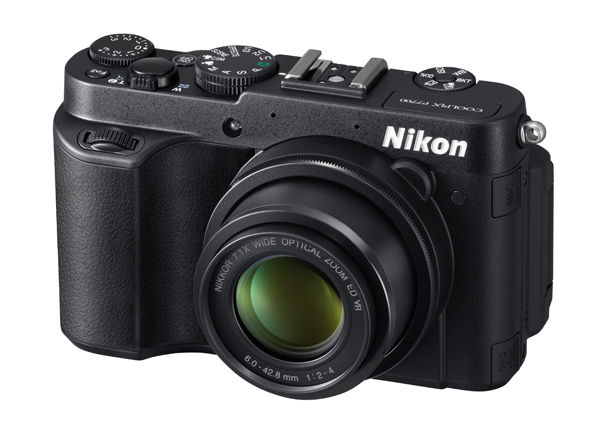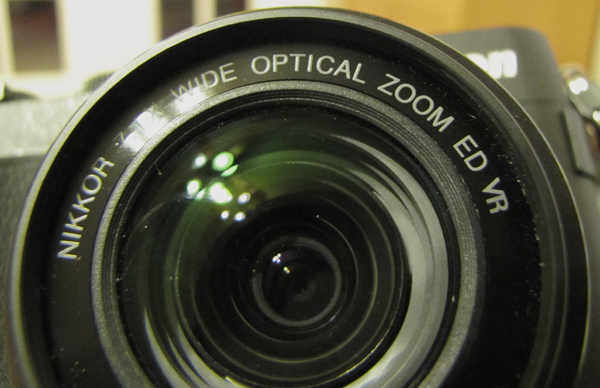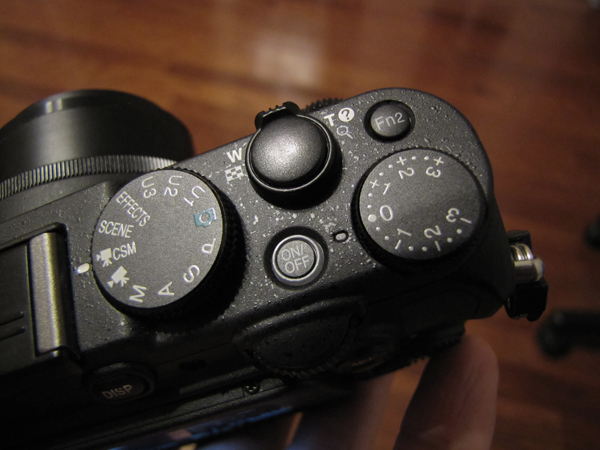Review: Nikon P7700 Digital Camera
In the P7700, Nikon has improved on earlier P7000 models with numerous video formats and a microphone input, plus a tilt-swivel display and several under-the-hood improvements. Is this the video-and-stills powerhouse I've been waiting for?
Video-capable DSLRs have revolutionized the way we shoot video at all levels of production. But can we now say expect similar results from smaller internal-zoom cameras like the Nikon P7700? They can all shoot full HD now. Add a microphone input, a built-in hot shoe and amp, image stabilization, and lots of external controls, and a camera that fits in your pocket becomes a capable production tool.
The advantages are obvious: You don't have to carry around several different lenses, or bother with lens changes because something is too close or too far. Another key advantage in the Nikon P7700 in particular is the f2-f4 28-200mm, image-stabilized, Nikkor lens you get in a $399 (street) camera. A DSLR lens alone with that capability would cost you considerably more than the Nikon P7700, before you even add a camera body.
I've been following the Nikon P7000 series cameras since they launched several years ago. The first generation was lauded for the quality of the stills, but overall it was very slow. The P7100 was a noted improvement, but it was still slow in comparison to other similar cameras.
Now the P7700 (Figure 1, below) is here with even more capability—especially with the video. Nikon added numerous video formats, and a microphone input. They also added a tilt-swivel display and several under-the-hood improvements. Does it finally perform as expected?

Figure 1. The Nikon P7700
In Your Hand
In your hand, the P7700 is an unassuming block of a camera. The grippy surface front and back has enough room even for big fingers to rest. Not far away on the front and top are user-programmable Fn (function) keys you can set to do the tasks you need most. There are also two rotary dials on the front and back—similar to a DSLR, so you can set this camera up very similarly.
The tilt-swivel display is very nice. It's crisp, clean and performs as you would expect it. After years of using a tilt-swivel display on camcorders, trying to use a still camera with a fixed rear display for video is a very annoying experience. Either everything has to be shot at eye level with a loupe, or you need to get an external monitor, and that begs for some sort of rig to support it, and then the costs go up while ease of use goes way down.
The P7700's lens is a nice 7x that has an f2.0 aperture on the wide end, and only stops down to f/4 on the telephoto (Figure 2, below). Do note, however, that this is not a large-sensor camera, so you're not getting an uber-shallow depth of field, or the considerable light-gathering abilities found in large sensor cameras. But with the small sensor comes the ability to package a nice, fast 7x lens into a pocketable camera. The camera also has a built-in neutral density filter. This is quite unusual for a handheld point-and-shoot.

Figure 2. The P7700's 7x zoom lens
The two rotary dials can be set to change shutter and aperture (Figure 3, below). You can easily adjust either setting but not while shooting. In fact, in custom mode, you can adjust either parameter, but they lock when you begin shooting. Even in regular video mode, it does not auto adjust--which is surprising considering this is an auto mode.

Figure 3. Rotary dials and top-side programmable Fn button
Another surprise is that the threaded mount on the bottom of the camera is mounted right next to the battery/media door. So if you have it mounted onto nearly anything--and I mean even the smallest of mounts--you can't get the door open. The mount is not even centered under the lens. Perhaps it needs to be to the side so the optics have some place to retract.
Related Articles
D7100 features 24.1 megapixel CMOS sensor, 51 focus points including 15 cross-type sensors, 100-6400 ISO range, and new WU-1a wireless mobile adapter
In Part 1 of this two-part series on the Nikon D800, I looked at the operation and functionality of the D800 DSLR as a video camera. Now, in Part 2, I'll share some usability notes, as report the results of some audio and video tests (with test footage) comparing the D800 to another highly regarded DSLR, the Panasonic GH2--to see if a lower-priced but very capable DSLR can measure up with quality glass--and to a more traditional prosumer camcorder.
In this two-part series, we'll examine how well Nikon's much-heralded D800 DSLR works as a video camera, in terms of operability and functionality. In part two, we'll report on some audio and video tests comparing the D800 to another highly regarded DSLR, and to a more traditional prosumer camcorder.